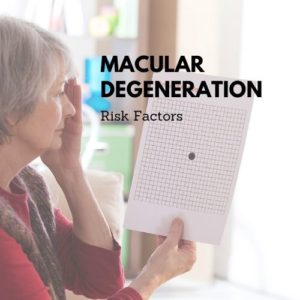ARMD | Risk Factors


There are two types of photoreceptor cells—rods and cones. The rod photoreceptors detect motion, provide black and white vision, and function well in low light. The cones are responsible for central vision and color vision and perform best in medium and bright light.
All photoreceptor cells convert light into chemical and nerve signals and transport them through the optic nerve to the visual centers of the brain.
The rods are located throughout the retina and the cones are concentrated in a small central area of the retina called the macula. The center of the macula has a small depression called the fovea. The fovea has only cone photoreceptors and is the point in the retina responsible for maximum visual acuity and color vision. The macula is the only part of the retina which can provide 20/20 vision and your central vision.
Wet and Dry Macular Degeneration
There are two forms of macular degeneration—wet and dry. The dry form causes thinning of the macular tissues and gradual central vision loss may occur, but it is never as severe as the vision loss caused by the wet form. There are currently no FDA-approved treatments for dry macular degeneration.
In about 10 percent of cases, dry AMD progresses to a more advanced disease affecting the blood vessels beneath the retina causing them to leak blood and fluid. This is why it is termed “wet” macular degeneration. The leakage causes permanent damage to the photoreceptor cells which die off and that creates blind spots in the central vision. There are FDA-approved treatments to stop the abnormal blood vessel growth.
In general, dry macular degeneration is more insidious and leads to less severe loss of central vision compared to the "wet" form.
Risk Factors for Developing ARMD
- Being over age 60
- Having a family history of macular degeneration
- Cigarette smoking
- Obesity
- Hypertension
If you have two of these risk factors, you should schedule an appointment with an ophthalmologist for a dilated eye examination.
If you are at risk, watch for the following symptoms of wet macular degeneration:
- Sudden, noticeable loss of vision
- Sudden distortion of vision, such as straight lines that look wavy.
See an ophthalmologist right away if these symptoms occur. Treatments for wet macular degeneration provide an excellent chance of stopping further vision loss.


